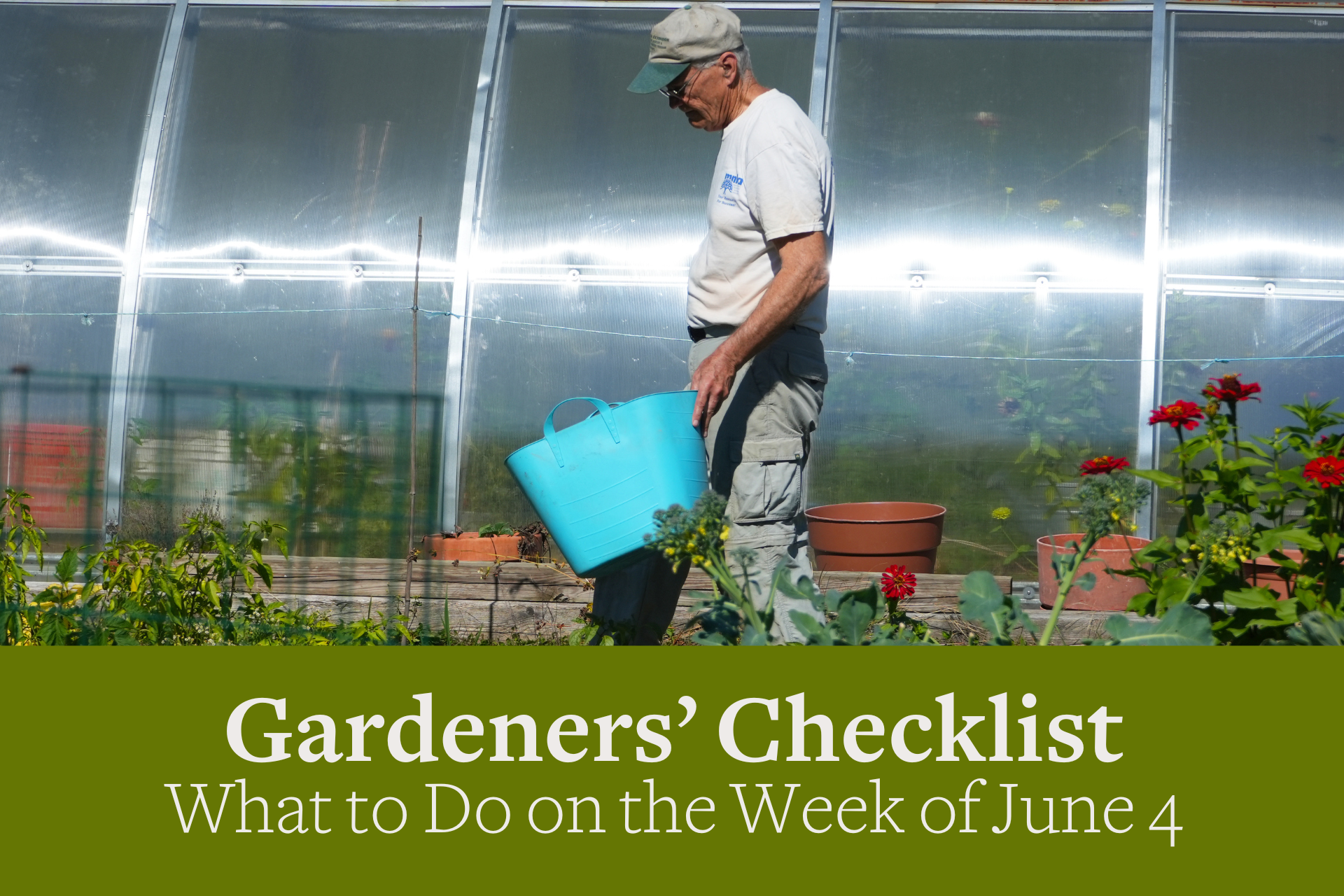You are here
Gardeners Checklist: Here Is What to Do on the Week of June 4
Gardeners Checklist: Here Is What to Do on the Week of June 4
By Ron Kujawski
* Sow more chervil, cilantro and dill seeds for a continuous supply of fresh leaves. These herbs tend to bolt (produce flowers) when the weather gets hot, so keep a fresh supply of plants coming along. Allow the bolted dill and cilantro flowers to set seed, then collect the seed to use as seasoning or save some seed for replanting. Cilantro seed is better known as coriander. Grind the cilantro seeds in a spice grinder to create the spice, coriander.
* Cut off the scapes from garlic plants. They should soon be appearing. A scape is the leafless upright stalk that arises from the center of the garlic plant. Harvest scapes while they are still tender and before they curl tightly. Garlic scapes are edible and can be chopped and used like a garlic clove. Scapes make a great pesto, can be used in stir fries, or can be pickled. Once the scapes become tough, cut them off and use them to make a delicious garlic broth.
* Carefully examine the leaves of potato plants for Colorado potato beetles. Pick off the beetles and then crush or use other merciless methods for disposing of them. Also, routinely examine the undersides of leaves on potato plants for clusters of bright yellow-orange beetle eggs. Crush these before they hatch.
* Go on slug patrol. With all of the recent rain, slugs and snails are everywhere, happily dining on vegetable and flower plants. Make them even happier, albeit temporarily, by setting out pans of beer among your plants. Slugs and snails are attracted to the beer, crawl into the pans, then drown. What a way to go! A less joyful approach would be to use slug bait containing iron phosphate, a natural soil mineral. Another reported option is to scatter coffee grounds around plants or spray plant foliage with coffee. I haven’t tried the coffee approach, so I don’t know how well it works. I think it may work best on slugs suffering a hangover from the beer.
* Place straw under ripening strawberries to keep the fruit off wet soil.
*
I often recall the fascination my kids had for sunflowers. I assume this fascination relates to the size of the mature plant and the enormous flower. Whatever the reason, growing sunflowers is quite easy. This is a good time to plant sunflowers. Rather than direct sowing in the garden, however, pre-sprout the seed by placing it between two layers of damp, but not soggy, paper towel. Place the towels in a large zip-lock bag and check on the seed daily. Once seeds have begun to sprout, immediately plant them in the garden. Your planting site should be in full sun…..because where else would one plant something called sunflower? Actually, the name has more to do with the size, shape, and color of the flower. Because they grow quickly and require little care, this is a great plant to use when trying to interest kids in the pleasures of gardening, a sensible alternative to computer games. There is also the additional reward of collecting and eating the nutritious seeds.
Ron Kujawski began gardening at an early age on his family's onion farm in upstate New York. Although now retired, he spent most of his career teaching at the UMass Extension Service. He serves on Berkshire Botanical Garden’s Horticulture Advisory Committee. His book, Week-by-Week Vegetable Gardener’s Handbook, is available here.
Help Our Garden Grow!
Your donation helps us to educate and inspire visitors of all ages on the art and science of gardening and the preservation of our environment.
All donations are 100 percent tax deductible.


